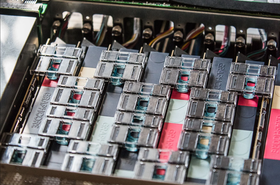The UK government has announced new funding and support for two new semiconductor Innovation and Knowledge Centers (IKC) in Bristol and Southampton.
As part of the Department for Science Innovation and Technology’s (DSIT’s) UK National Semiconductor strategy, each site will receive £11 million ($13.9m) to help bring new chip technologies to market. A further £4.8m ($6m) in funding has also been announced to support semiconductor skills projects.
Through the new IKC sites, researchers will have access to prototyping technology and support through training for spinouts, workshops, and connections with industry players.
At the REWIRE facility at the University of Bristol, home to one of the new IKC sites, support will be provided to chip companies across South West England and Wales developing high-voltage electronic devices with compound semiconductors.
At the Cornerstone IKC in Southampton, funding will be used to further research into the University of Southampton’s specialism in silicon photonics, an approach to semiconductors where light is used to communicate information instead of electricity.
Speaking at the Southampton center, Minister for Tech and the Digital Economy Saqib Bhatti said that the investment marks “a crucial step in advancing [the UK’s] ambitions for the semiconductor industry.”
He added: “Just nine months into delivering on the National Semiconductor Strategy, we’re already making rapid progress towards our goals. This isn’t just about fostering growth and creating high-skilled jobs, it’s about positioning the UK as a hub of global innovation, setting the stage for breakthroughs that have worldwide impact.”
In May 2023, the UK government announced its National Semiconductor Strategy, a plan to spend £1 billion ($1.24bn) on supporting domestic semiconductor development. Under that scheme, businesses will get £200m ($253m) between them from 2023 to 2025, with the rest set to be handed out through to the end of 2033.
The funding announcement was significantly smaller than the tens of billions of dollars the US and EU governments have pledged in financial support for their own domestic semiconductor sectors.







